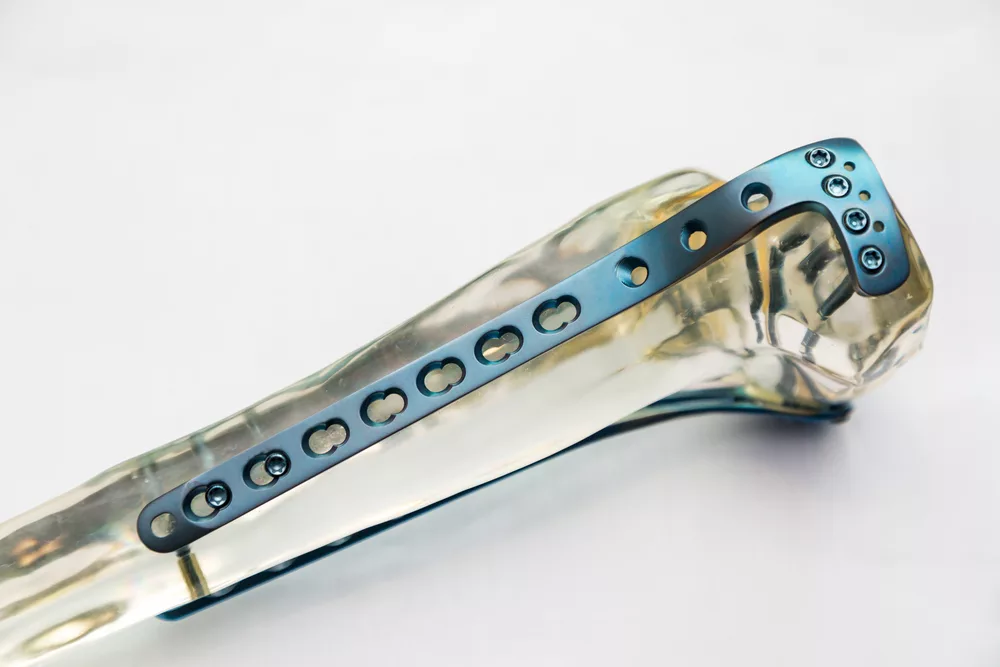 A well-known manufacturer of medical devices with a focus on orthopedic implants is Uteshiya Medicare. Uteshiya Medicare has developed a reputation as a reliable supplier of orthopedic solutions because of its dedication to quality and innovation.
A well-known manufacturer of medical devices with a focus on orthopedic implants is Uteshiya Medicare. Uteshiya Medicare has developed a reputation as a reliable supplier of orthopedic solutions because of its dedication to quality and innovation.
We shall examine several elements of the production of orthopedic implants at Uteshiya Medicare in this post, ranging from raw materials to sterilization and packaging.
Overview of Uteshiya Medicare
Leading orthopedic implants manufacturer Uteshiya Medicare is committed to creating and producing top-notch orthopedic implants.
They are dedicated to enhancing patients’ lives by providing innovative solutions that support mobility, functionality, and general well-being.
Raw Materials Used in Manufacturing Orthopedic Implants
Stainless Steel:
Orthopedic implants often use stainless steel alloys like 316L or 316LVM. They have exceptional bio compatibility, corrosion resistance, and strength. For bone plates, screws, and joint replacements, stainless steel implants are used frequently.
Titanium and Titanium Alloys:
Titanium is a thin metal with a high strength-to-weight ratio and remarkable bio compatibility. It is frequently utilized in orthopedic implants, especially when more strength and less weight are sought. Hip implants, spinal implants, and bone fixation devices are frequently made of titanium alloys, such as Ti-6Al-4V since they have better mechanical qualities.
Cobalt-Chromium Alloys:
Cobalt-chromium alloys, such CoCrMo, have high bio compatibility and wear resistance. Due to their strength and corrosion resistance, they are utilized in orthopedic implants, including hip and knee replacements.
Bio compatible Polymers:
They are utilized to create parts for spinal fusion or soft tissue healing. Polyethylene, polyetheretherketone (PEEK), and ultra-high-molecular-weight polyethylene (UHMWPE) are a few examples of polymers used. These polymers offer a range of benefits, like combining mechanical strength, flexibility, and bio compatibility.
Implant Design And Engineering
Engineers, surgeons, and other medical specialists work together to develop implants that specifically address patients’ needs. The following are the main components of the engineering and design process.
Needs Assessment
Computer-Aided Design
Prototyping
Finite Element Analysis (FEA)
Bio-mechanical Testing
Collaboration and Iteration
Blueprint For A Product
The product blueprint acts as a thorough production schedule for orthopedic implants. It includes every requirement for specs, measurements, and manufacturing procedures to create the implant. The product specification contains,
Geometric Specifications
Material Specifications
Surface Finish
Manufacturing Processes
Procedure for Manufacturing Implants
Orthopedic implants are produced by transforming raw materials into completed implants by the product’s pattern. The actions could involve,
Raw Material Preparation
Casting (if applicable)
Machining
Surface Finishing
Heat Treatment (if applicable)
Quality Control Measures
Maintaining good standards throughout the orthopedic implant production process is a priority for Uteshiya Medicare. Effective quality control methods are implemented to ensure that the finished products fulfill the needed specifications and follow regulatory norms.
Sterilization and Packaging of Orthopedic Implants
Orthopedic implants are sterilized after the orthopedic implants manufacturing process to get away from any potential infections and make sure they are safe for insertion. After sterilization, the implants are properly packaged to preserve their sterility and safeguard them during storage and transportation. An outline of the packing and sterilizing procedure is provided below,
Sterilization Method Selection
Sterilization Validation
Packaging Design
Packaging Process
Labeling and Documentation
Sterility Assurance
Conclusion
The strict attention to detail put into each step of the production process by Uteshiya Medicare proves their commitment to producing orthopedic implants of the highest quality. Uteshiya Medicare takes all necessary steps to guarantee that its implants satisfy the highest requirements for performance and safety.
FAQs
How long do Orthopedic implants last?
The type of orthopedic implant, the patient, and the unique circumstances of each case are just a few variables that can affect how long an orthopedic implant lasts. Orthopedic implants typically have a lifespan of several years and, in some cases, even a lifetime. It is important to remember that some variables, including the patient’s age, level of activity, general health, and the type of implant utilized, might affect how long implants last.
How has Uteshiya Medicare incorporated sustainability practices into its manufacturing process?
Uteshiya Medicare has included sustainability principles throughout its production process in the following ways,
Material Selection
Waste Management
Energy Efficiency
Water Conservation
Compliance with Environmental Regulations
Uteshiya Medicare seeks to reduce its environmental effect and support a more sustainable healthcare sector by incorporating sustainability practices into its orthopedic implant manufacturing process.

